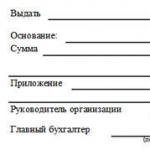Chicken mites live in both residential and non-residential premises- in attics, poultry houses. There are a lot of them on the litter, since they attack only for food, and the rest of the time they live in the nest. Ticks can be found on upper floors houses, where they enter through cracks in window sills and ventilation. You can bring ticks into your apartment with feather products.
Chicken mite close-up
The main fight against chicken mites, by the way, they are also called pigeon mites, is carried out indoors.
- Clean the chicken coop of dirt and move the birds to another room. Thorough cleaning of all nests, perches, and walls is necessary. Remove litter, cobwebs and droppings.
- Treat the floor, walls, and everything in the chicken coop with boiling water, a gas burner, or another heat source, such as a blowtorch. Thus, burn the entire room, throw away the old elements, and, if possible, make new perches.
- As a preventative measure, sometimes spray the chicken coop with diesel fuel, and just grease the floor and walls with white lime.
Choose a remedy for chicken mites:
A good prevention of the appearance of chicken mites is hot grease. But they need to process the wood for the chicken coop during the construction stage.
Feather mites or red mites live in unkempt, damp poultry houses with poor ventilation. First, they occupy nests and bedding, after which they move onto the bird’s body. Their bites are very painful and dangerous. When biting a bird, the tick injects poison into the wound, which prevents blood clotting. This creates a painful red lesion.
Fighting methods
There are various chemicals and solutions made to control mites, but many of them have not been tested on chickens and are therefore not recommended for this purpose. It's best to try to fight the tick first natural means.

To prepare the product you will need:
- 30 ml garlic juice;
- 300 ml water;
- teaspoon of any combination of essential oils mint, caraway, lavender, coriander, cloves, cinnamon, bay leaf.

All ingredients are thoroughly mixed and sprayed on sick chickens every other day for 2-3 weeks. For preventive purposes, this remedy is used once a week. Special attention You need to pay attention to the area under the wings and around the anus. After spraying the chickens, it is recommended to treat them with diatomaceous earth, rubbing the powder into the feathers and skin. Care must be taken to ensure that dust does not get into the eyes and lungs of the birds.
When treating sick birds to prevent anemia, they should increase their iron intake. Foods containing large amounts of iron include:
- eggs, seafood, poultry, fish, meat;
- dandelion greens, beet tops, spinach;
- kale, broccoli, sweet potatoes;
- raisins, watermelon, strawberries, kale;
- molasses, corn, oatmeal, wheat products.
The introduction of these products into the diet of birds promotes their speedy recovery, since when infected, the level of iron in the blood decreases and the immune system weakens.
Adding to drinking water clove fresh garlic or adding garlic powder to food is a good prevention of infection, because ticks cannot tolerate the taste of the blood of those birds that feed on garlic.
Today we will tell you how to recognize this disease in birds, talk about methods of ridding chickens of ticks, and also discuss preventive measures.


Infection of birds with ticks is fraught with the development of the following diseases:

Chicken lice can infect the entire population of your birds at once, and seriously reduce their productivity. Find out how to deal with these annoying insects
Medium size pliers
These mites are similar in size to fleas, and can already be seen with the naked eye when examining a bird.

Red tick

The ticks themselves are light yellow in color; they only turn bright red when they have sucked blood. However, thanks to this feature, they are usually called red.
- tuberculosis;
- pasteurellosis;
- salmonellosis.

Ticks mainly live on poultry, but sometimes they also infect farm animals. They feed at night because they are afraid of sunlight.

Ixodid ticks

Symptoms and signs

There are also other symptoms of the presence of red mites:
- multiple wounds throughout the body;
- lack of normal mobility;
- heavy breathing, sometimes coughing;
- pallor of the ridge and mucous membranes;
- lack of appetite.
After a bite, particles of saliva enter the bird’s bloodstream, which have a detrimental effect on the functioning of the bird. nervous system. Redness occurs at this site, hyperthermia and paralysis are observed.
Ways to combat ticks
| Name | A comment |
|---|---|
| An oil-based solution is used to treat individuals several times a day. Full period disinfection is about 7 days. |
| It is used for spraying poultry and does not contain dangerous toxins. |
| The thick liquid is diluted in water according to the instructions. Each bird is then bathed in the solution for 60 seconds. The procedure is repeated after 2 weeks. |
| Available in the form powder mixture for processing individuals. |
| This solution is used to disinfect the chicken coop and individuals; you will first need to dilute it with water. |
| Available in the form of a spray for treating bird feathers. Used at intervals of 1 week. |
Such treatment agents do not pose a danger to the birds. However, to avoid any negative consequences, it is important to follow the instructions.
Wood ash and sand
Experienced farmers recommend installing several containers with wood ash and sand in the poultry house - in them the birds take baths on their own and clean their feathers. However, you will have to carefully ensure that this mixture does not become wet and periodically replace the contents of the containers.

If birds are often out for a walk, then wood ash is scattered in places where dust accumulates. This will attract individuals, and they will rush to clean their feathers in such “baths”.
Plants

You can carry out such treatment with plant components regularly, without any fear. Any herbal products do not have any effect negative impact on the body of chickens.
You can use another folk method chemical treatment poultry farming using black pepper, which is popular among poultry farmers.
Table 2. Coop Treatment Using Black Pepper
| Illustration | Description |
|---|---|
 | Step one: prepare a clean spray bottle. |
 | Step two: pour two liters of water into it. |
 | Step three: add a tablespoon of bleach. |
 | Step four: add a whole packet of ground black pepper to this mixture. |
 | Step five: spray each corner of the house with the resulting solution. |
It is important that there are no chickens in the poultry house at the time of processing. It is allowed to move birds into the treated premises only after a few days.
Prevention of chicken mites


Protection methods for people

Therefore, when processing birds, it is important to observe the following preventive measures:

Let's sum it up
The Ixodid tick is larger than the red tick and can be found both on the legs and under the feathers. It carries a number of dangerous diseases.

How to identify a tick
A sick bird is nervous and constantly itches. Reasons to check for ticks are also a decrease in egg production, wheezing and coughing. Lice can be seen if you run a white piece of paper over the holes and crevices in your coop. After such a check, small dots of dark or gray- these are bloodsuckers. In this case, it is imperative to begin the fight against ticks in order to prevent your birds from becoming severely infected.
Signs and treatment of the disease

Symptoms of bird mites:
- nervousness of birds, constant shaking of the head;
- long swims in the sand;
- the bird plucks feathers and itches constantly;
- the presence of wounds in the tail area, under the wing, on the legs and muzzle;
- decreased appetite and egg production, stopping weight gain;
- the presence of the mite itself in the feathers or litter of the chicken coop.
If you find mites on your chickens, you need to understand how to deal with them. First of all, it is worth treating wounds already caused by lice. Lubricate the bite areas with regular oil. After this, we apply any antiseptic - iodine, chlorhexidine, hydrogen peroxide. We heal the wound with a special ointment with a wound-healing effect.
Treatment of chickens for ticks should be comprehensive. Treating injuries that have already been caused will not solve the problem.
To answer the question: “how to completely get rid of chicken mites,” you need to understand their physiology and life cycle. It is not recommended to treat birds with insecticides. They only work against insects. To combat lice, use special anti-acaricidal agents. A week after treatment, it is recommended to reapply the preparations.

The list of products that are used in the treatment of chicken mites is small. Usually this is Sevin or Petherium powder - its safe analogue based on chamomile flowers. In severe cases, it is recommended to use Ecofleece. Some people use Peremethrin EC, which comes in spray form. Treatment of birds is carried out by spraying dissolved powders or directly rubbing them into the feathers.
People fight bloodsuckers using sand and ash. If you use such a mixture, there is no need to treat chickens - the bird treats itself by bathing in the ash. Ash and sand are placed in basins throughout the yard and changed after two weeks. It is important to ensure that the mixture does not get wet, otherwise it will have no effect.
Some, faced with the problem of chicken mites, are looking for how to get rid of them cheaply and quickly. Anti-tick agents based on chlorinated hydrocarbons may seem inexpensive. However, these drugs accumulate in the eggs and meat of processed birds and, if consumed, cause serious illness in humans.
Treating the chicken coop with boiling water or flame helps against mites in the chicken coop.

Prevention
Prevention is best method forget about bloodsuckers on your birds. It is necessary to regularly change the birds' bedding and keep the chicken coop dry and warm. Quartzizing the room after cleaning will not only eliminate the question of “how to remove pests,” but will also protect your pets from a number of other bacterial and viral diseases.
From this video you will learn how to deal with mites in chickens.
Pyrethrum for ticks
One day, a farmer I know called me and told me that young chickens that had just started laying eggs began to worry and lose weight, and their egg production dropped to almost zero. Some hens and roosters constantly wheeze and shake their heads.
Arriving at the poultry farm, I put on a robe, gloves and disposable shoe covers, and wrapped a clean cloth around my head so that I could only breathe and see.
It was painful to look at the chickens: thin, starved, with anemic pale combs and earrings, they wandered exhaustedly around the yard or stood with their hair ruffled.
More than once in the warm season, especially after prolonged rains, I had to observe this.
Entering the enclosure, I picked up the nearest corydalis and carefully examined the skin under the wings, in the neck and cloaca area. Everywhere there was the same picture: dark dots scattered across the skin between the feathers, like large grains of sand stuck on.
Using tweezers, I carefully transferred several dark “grains of sand” onto a sheet torn from a notebook. Through a magnifying glass, mites of an elongated oval shape, about 1 mm in size, were clearly visible against the background of white paper. The smaller ones were yellowish in color, the larger ones were from reddish to dark red and even purple - so they were pumped with chicken blood.
The mite can also settle in the bird’s ears, also causing inflammation. Therefore, when a bird is infected with a chicken mite, it sometimes shakes its head.
Chicken mite (also called bird mite or red mite) bird mite) drinks blood, injects poisonous saliva and can spread any infection that is dangerous for both birds and humans.
If you find a mite, the chicken coop must be treated from the inside: the floor, walls, perches and nests. First you will need to very thoroughly clean the house of droppings, litter, cobwebs - and any dirt. Feeders and drinking bowls also need to be cleared of any remaining food and water.
Then with boiling water, or even better, with flame blowtorch or gas burner treat the floor, walls, all cracks, as well as perches.
The bird itself must be treated with pyrethrum. This is an insect repellent powder that is completely harmless to humans and birds. Pyrethrum is sold in medical and veterinary pharmacies.
If pyrethrum is not available, you can use other preparations that are also harmless to poultry: 7% Sevin powder or an aerosol preparation of ecofleece. It is sprayed on chickens affected by mites. And the feathers of the bird are carefully sprinkled with pyrethrum or sevin powder. If you use Sevin, remember: no more than 15 g of powder per head. Such treatment - both of the poultry house and the chickens themselves - will need to be carried out twice with an interval of 10-15 days.
If you want to rid your birds of ticks forever, inspect them often.
In addition, in the warm season, it is advisable to spray the inside of the chicken coop with diesel fuel or used machine oil. This treatment is carried out 2-3 times during the summer. Some odorous plants are good at repelling ticks: leaves of mint, parsley, celery, onion and garlic. Potato or tomato tops laid out on the floor of the poultry house also help.










